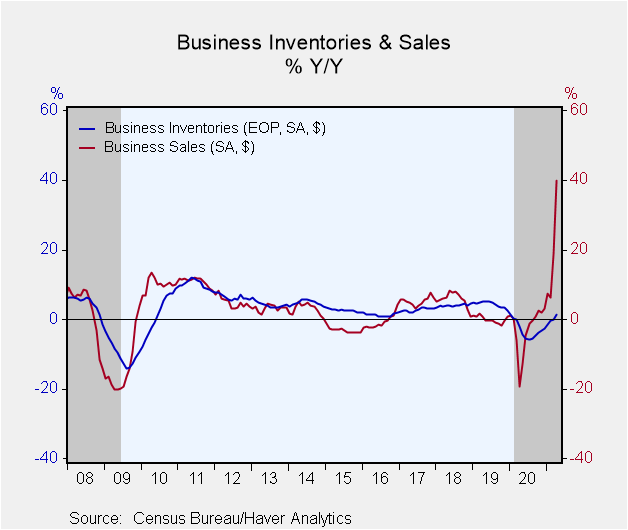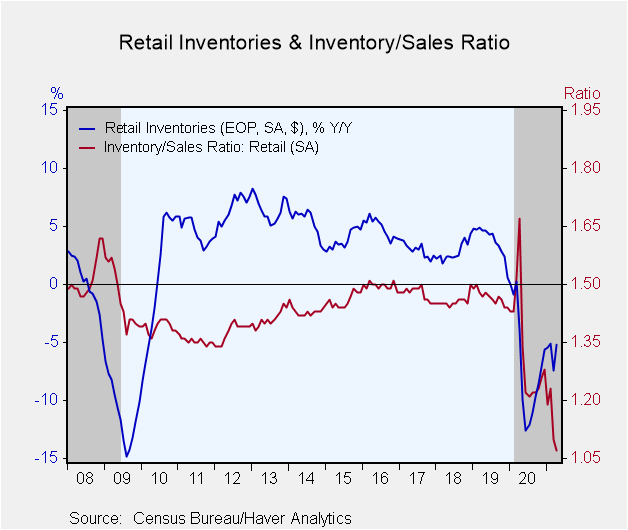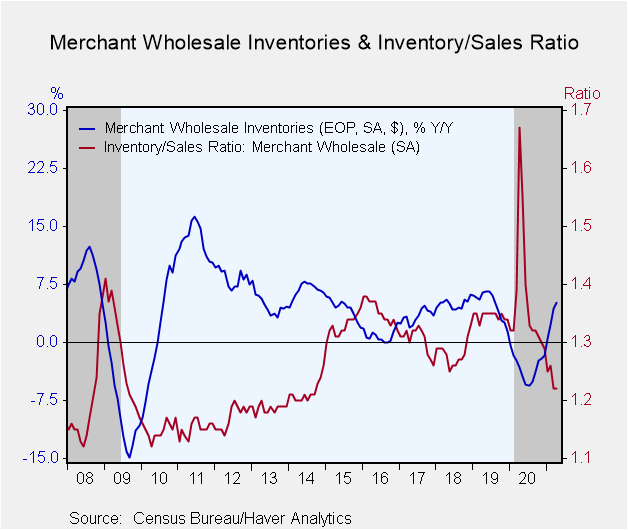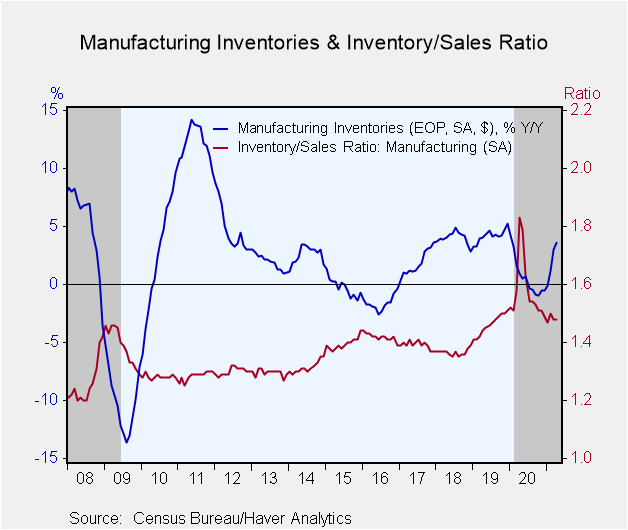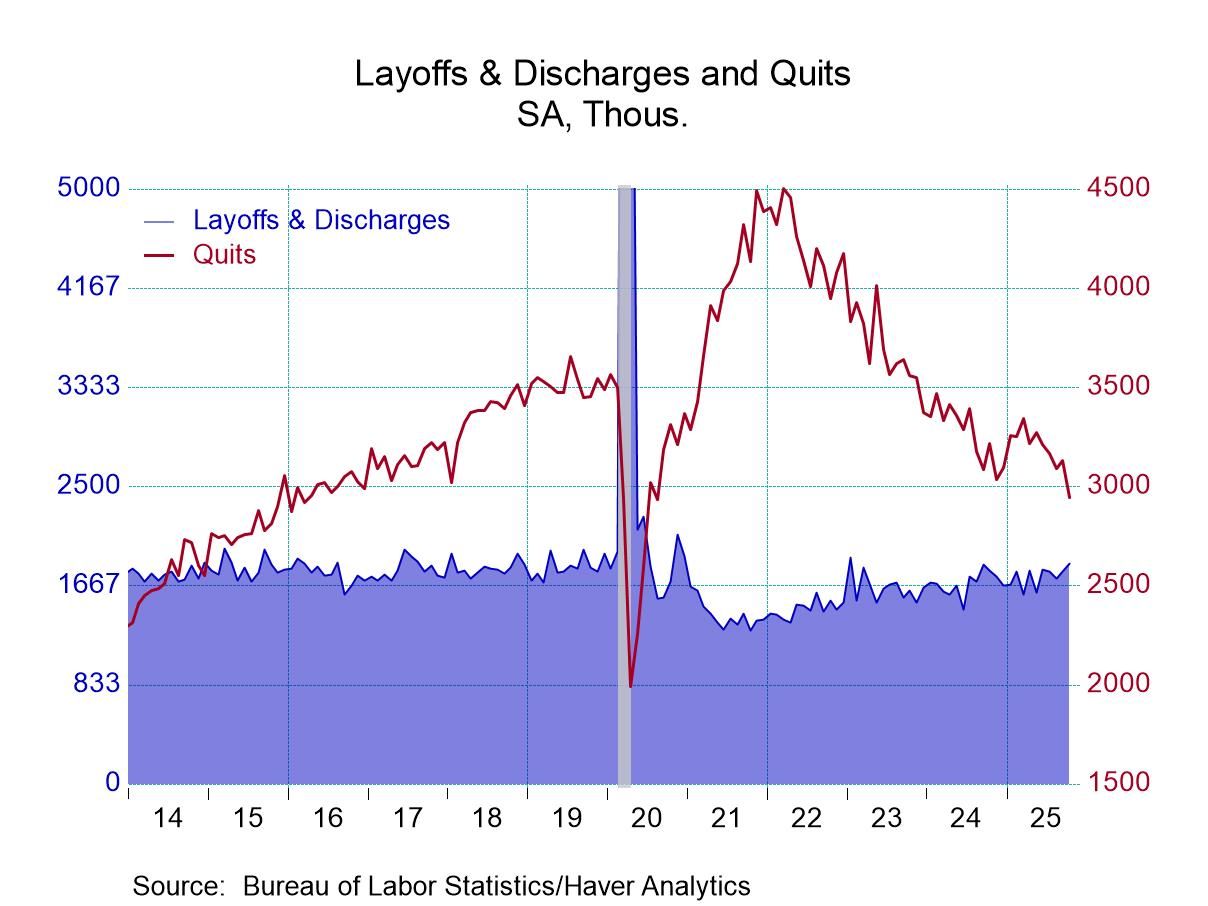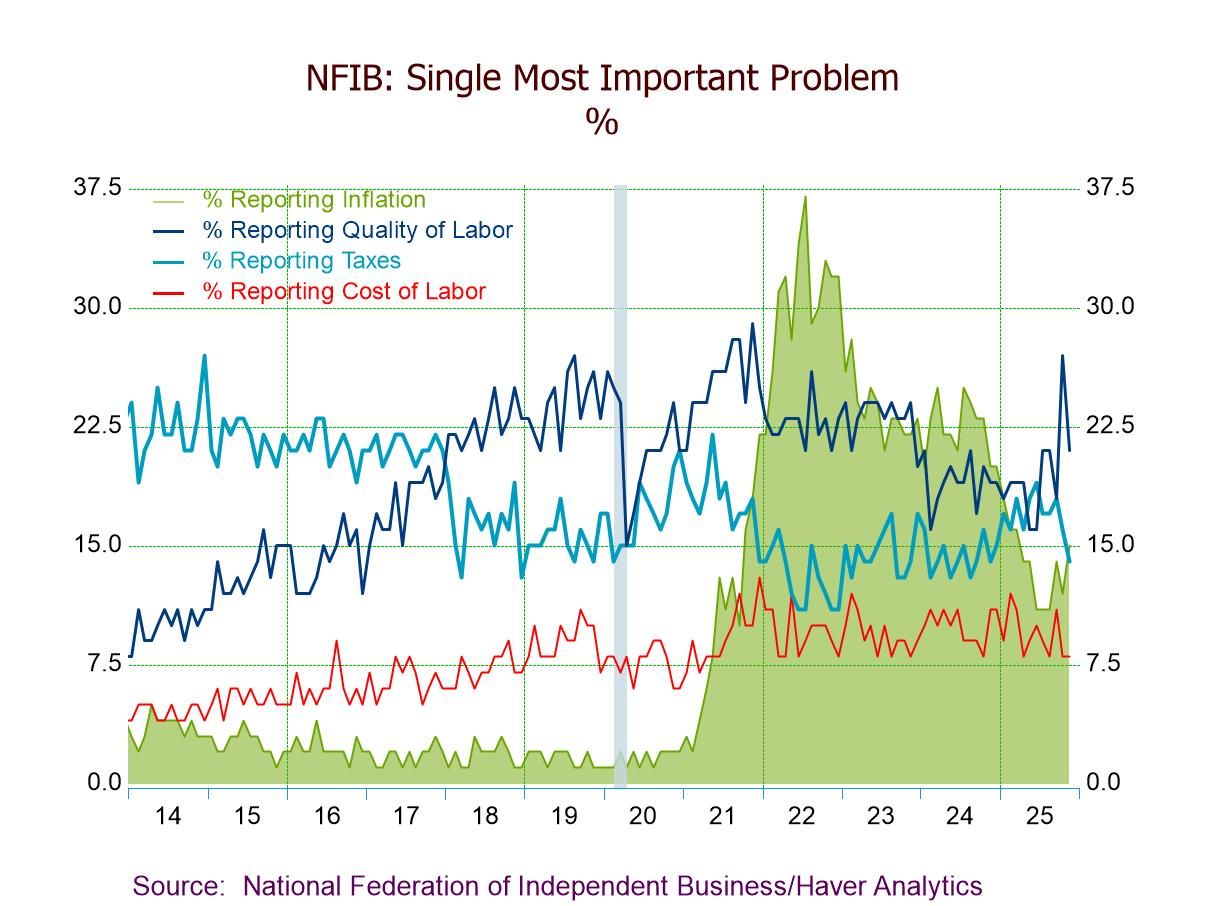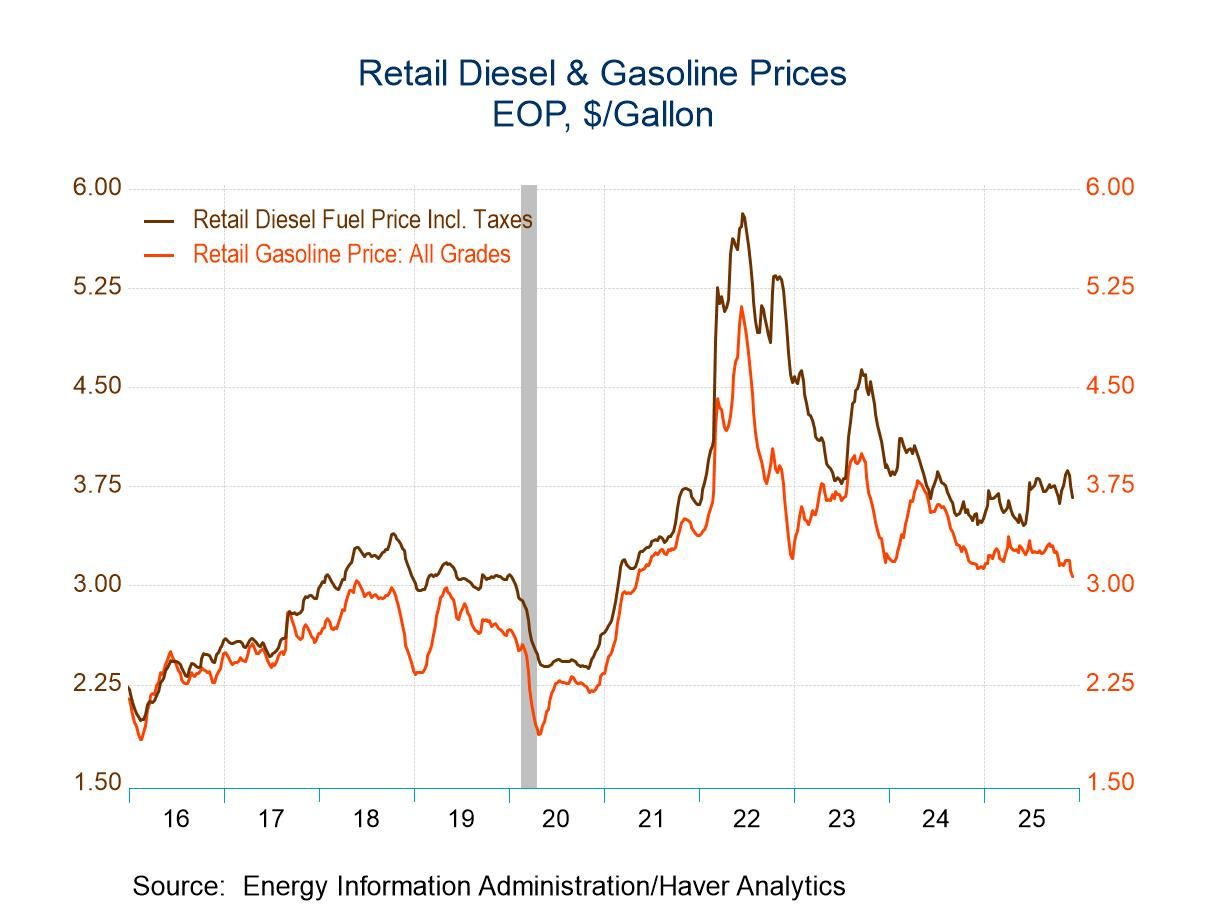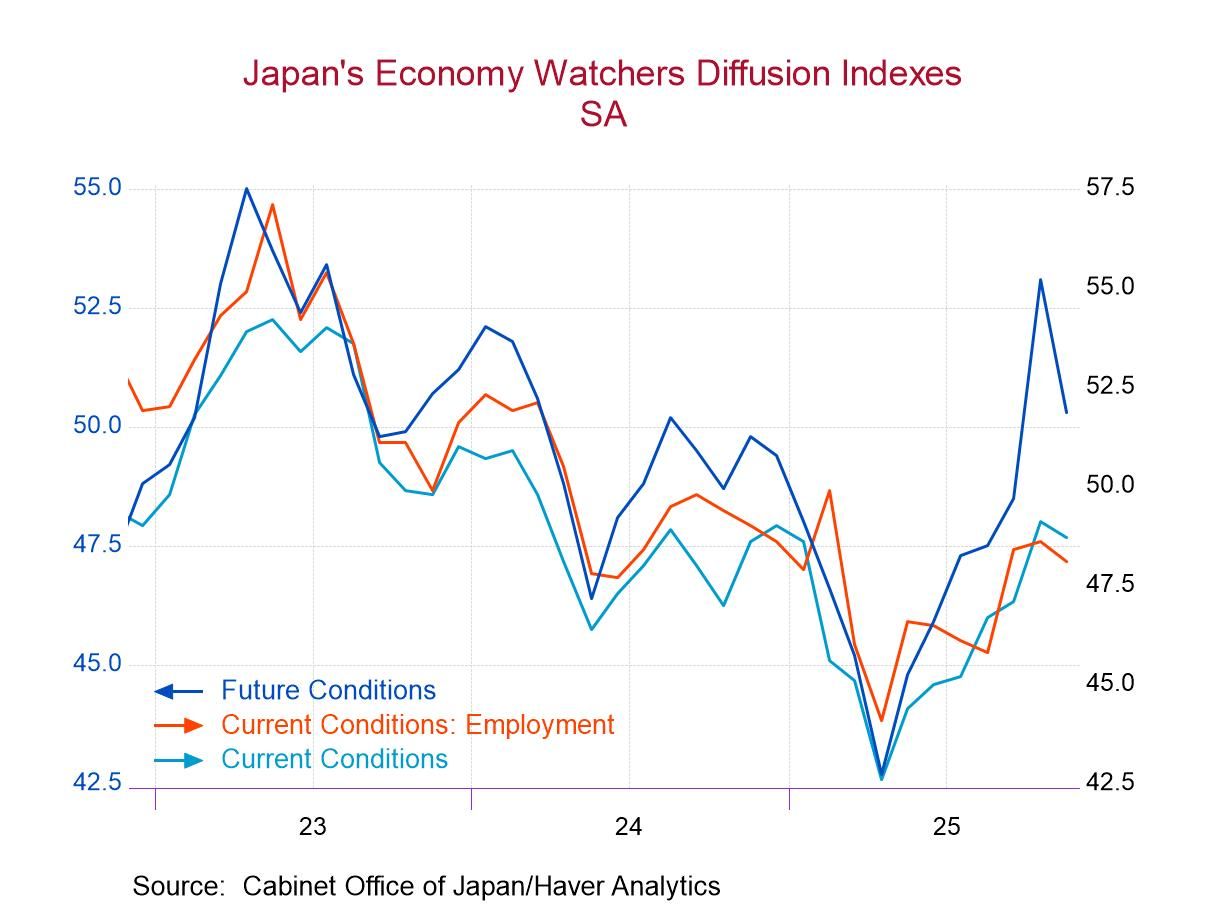 Global| Jun 15 2021
Global| Jun 15 2021U.S. Business Inventories Edge Down as Expected in April
Summary
• Inventory gains appear to be stalling. • April business sales built on March gains. • Inventory-to-sales ratio continued to decline. Total business inventories edged down 0.2% (+1.3% y/y) during April reversing the 0.2% March rise. [...]
• Inventory gains appear to be stalling.
• April business sales built on March gains.
• Inventory-to-sales ratio continued to decline.
Total business inventories edged down 0.2% (+1.3% y/y) during April reversing the 0.2% March rise. Inventories had risen by an average of 0.7% per month for the prior half year. April business sales increased by 0.6% (40.0% y/y) following a 5.8% surge in March. Sales are up 9.5% thus far this year.
Retail inventories declined sharply in the past two months. The 1.8% drop (-5.2% y/y) in April followed a 1.4% decline in March. These declines were entirely due to the 13.3% two-month plunge in motor vehicle stocks, which account for 27% of total retail inventories. Excluding motor vehicles, retail inventories rose 0.6% (+6.0% y/y) after a 0.7% rise. Furniture inventories gained 0.7% (+6.1% y/y) and inventories of building materials and garden supplies increased 0.8% (+17.4% y/y). Clothing inventories increased 2.3% (+9.5% y/y) and general merchandise inventories rose 0.6% (+8.9% y/y). Wholesale inventories increased 0.8% (5.2% y/y) in April while factory inventories rose 0.3% (3.6% y/y).
April business sales improved on their strong March gains. Retail sales increased 0.5% (48.1% y/y) after surging 11.0% in March. However, May retail sales were released earlier today and showed some retreat from the tremendous early-year gains, declining 1.4% (+28.2% y/y).
April wholesale sales strengthened 0.8% (43.6 y/y), while manufacturing shipments rose 0.4% (28.2% y/y).
As sales continued to grow faster than inventories through April, the inventory-to-sales (I/S) ratio fell to a 10-year low of 1.25 (down from 1.35 at the end of 2020). The bulk of this year's decline in the I/S ratio has been in the retail sector, which fell to a record low of 1.07 (from 1.28 at yearend). I/S ratios remained unchanged in April for wholesale trade (1.22) and manufacturing (1.48).
The manufacturing and trade data are in Haver's USECON database.
| Manufacturing & Trade | Apr | Mar | Feb | Apr Y/Y | 2020 | 2019 | 2018 |
|---|---|---|---|---|---|---|---|
| Business Inventories (% chg) | -0.2 | 0.2 | 0.6 | 1.3 | -2.6 | 2.4 | 4.5 |
| Retail | -1.8 | -1.4 | 0.1 | -5.2 | -5.6 | 0.6 | 4.4 |
| Retail excl. Motor Vehicles | 0.6 | 0.7 | 1.4 | 6.0 | 0.8 | 1.7 | 3.4 |
| Merchant Wholesalers | 0.8 | 1.2 | 1.0 | 5.2 | -1.7 | 1.4 | 6.2 |
| Manufacturing | 0.3 | 0.8 | 0.8 | 3.6 | -0.5 | 5.3 | 2.8 |
| Business Sales (% chg) | |||||||
| Total | 0.6 | 5.8 | -1.6 | 40.0 | -2.9 | 0.0 | 5.7 |
| Retail | 0.5 | 11.0 | -3.0 | 48.1 | 3.1 | 3.0 | 4.2 |
| Retail excl. Motor Vehicle | -0.7 | 9.2 | -2.8 | 35.2 | 4.0 | 3.0 | 5.0 |
| Merchant Wholesalers | 0.8 | 4.3 | 0.0 | 43.6 | -4.7 | -0.2 | 6.7 |
| Manufacturing | 0.4 | 2.1 | -1.8 | 28.2 | -6.7 | -2.6 | 6.0 |
| I/S Ratio | |||||||
| Total | 1.25 | 1.26 | 1.33 | 1.73 | 1.43 | 1.42 | 1.36 |
| Retail | 1.07 | 1.10 | 1.23 | 1.67 | 1.34 | 1.47 | 1.46 |
| Retail excl. Motor Vehicles | 1.04 | 1.03 | 1.12 | 1.33 | 1.16 | 1.22 | 1.21 |
| Merchant Wholesalers | 1.22 | 1.22 | 1.26 | 1.67 | 1.38 | 1.35 | 1.28 |
| Manufacturing | 1.48 | 1.48 | 1.50 | 1.83 | 1.58 | 1.46 | 1.37 |
Peter D'Antonio
AuthorMore in Author Profile »Peter started working for Haver Analytics in 2016. He worked for nearly 30 years as an Economist on Wall Street, most recently as the Head of US Economic Forecasting at Citigroup, where he advised the trading and sales businesses in the Capital Markets. He built an extensive Excel system, which he used to forecast all major high-frequency statistics and a longer-term macroeconomic outlook. Peter also advised key clients, including hedge funds, pension funds, asset managers, Fortune 500 corporations, governments, and central banks, on US economic developments and markets. He wrote over 1,000 articles for Citigroup publications. In recent years, Peter shifted his career focus to teaching. He teaches Economics and Business at the Molloy College School of Business in Rockville Centre, NY. He developed Molloy’s Economics Major and Minor and created many of the courses. Peter has written numerous peer-reviewed journal articles that focus on the accuracy and interpretation of economic data. He has also taught at the NYU Stern School of Business. Peter was awarded the New York Forecasters Club Forecast Prize for most accurate economic forecast in 2007, 2018, and 2020. Peter D’Antonio earned his BA in Economics from Princeton University and his MA and PhD from the University of Pennsylvania, where he specialized in Macroeconomics and Finance.


